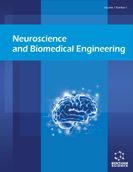Abstract
Pain is a well-known non-motor symptom of Parkinson’s disease (PD) and might be related to not only peripheral factors but also abnormal processing in the central nervous system (CNS). The aim of this study is to investigate dysfunction of the central processing of pain, and examine the relationships between abnormal processing of pain and motor or non-motor symptoms of PD. To induce pain-related evoked potentials in 23 PD patients and 12 healthy controls, we activated Aδ fibers using a push-pin type needle electrode inserted in the epidermis. Evoked potentials were recorded from the Cz electrode at the index finger and second toe. The Hoehn-Yahr stage, Unified Parkinson’s Disease Rating Scale (UPDRS), Self-rating Depression Scale (SDS), and Mini Mental State Examination (MMSE) were evaluated. In addition, MIBG myocardial scintigraphy was performed and early and delayed heart-to-mediastinum (H/M) ratios were examined. The N1-P1 peak-to-peak amplitudes, which are thought to originate from the anterior cingulate cortex and insula, were significantly lower in PD patients than in the controls for both the upper and lower limbs (both P<0.01). The N1-P1 amplitudes for the upper limbs were significantly correlated with the H/M ratio (P<0.05). The N1-P1 amplitudes did not correlate with the severity of clinical parameters such as the Hoehn-Yahr stage or UPDRS and SDS or MMSE. These results may reflect abnormal central processing of pain in PD patients, which appears to be independent of the clinical features and severity of motor and nonmotor symptoms except for degeneration of the myocardial sympathetic nerve.
Keywords: Parkinson’s disease, non-motor symptoms, motor symptoms, pain-related evoked potentials, myocardial sympathetic degeneration, 123I-metaiodobenzylguanidine (MIBG) myocardial scintigraphy.
Graphical Abstract
 15
15

